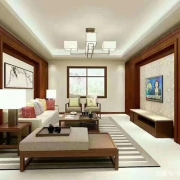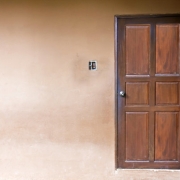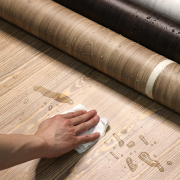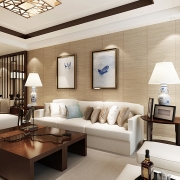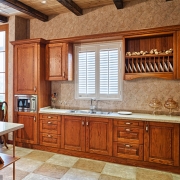Come mescolare e abbinare diversi pannelli murali decorativi in uno spazio?
Mescolare e abbinare diversi pannelli murali decorativi in uno spazio può creare un ambiente dinamico e visivamente interessante. Ecco alcuni suggerimenti per aiutarti a ottenere una miscela armoniosa:
Attieniti a un tema unificante: scegli i pannelli a parete che condividono un tema comune, che si tratti di colore, motivo, trama o materiale. Ciò crea un senso di coesione e impedisce allo spazio di sentirsi disgiunto.
Variare le dimensioni del pannello: Utilizza pannelli di diverse dimensioni per aggiungere varietà. Considera l'idea di mescolare pannelli più grandi e prominenti con pannelli più piccoli per creare un aspetto equilibrato.
Colori e texture a contrasto: sperimenta colori e texture a contrasto. Ad esempio, abbina un pannello liscio e lucido a un pannello strutturato o opaco per aggiungere profondità e interesse.
Creare muri d'accento: Designare muri specifici come muri d'accento e utilizzare pannelli diversi su queste superfici. Ciò ti consente di sperimentare stili diversi senza sovraccaricare l'intero spazio.
Considera le proporzioni: Prestare attenzione alle proporzioni dei pannelli. Assicurati che il mix di dimensioni e modelli sia in linea con le dimensioni della stanza e con la scala degli altri elementi di design.
Equilibrio audace e discreto: se un pannello ha un motivo o un colore audace, bilancialo con pannelli più tenui o neutri. Ciò impedisce allo spazio di sembrare troppo occupato.
Usa una base neutra: Inizia con una base neutra e introduce tocchi di colore o motivi con pannelli specifici. Ciò fornisce flessibilità e impedisce allo spazio di sembrare troppo caotico.
Sperimenta i layout dei pannelli: prova diversi modelli di layout, come disposizioni geometriche o pannelli alternati, per aggiungere interesse visivo. Usa la tua creatività per trovare un layout che valorizzi lo spazio.
Considera gli elementi architettonici: Prendi in considerazione le caratteristiche architettoniche della stanza. Utilizza i pannelli a parete per migliorare e integrare queste funzionalità piuttosto che competere con esse.
Combina diversi materiali: Mescola materiali come legno, metallo e vetro per un look diverso e sofisticato. Assicurati che i diversi materiali si armonizzino con lo stile generale dello spazio.
Creare una transizione graduale: Se stai passando da un tipo di panel a un altro, valuta la possibilità di creare una transizione graduale introducendo elementi intermedi che condividano le caratteristiche di entrambi.
Sperimenta con le altezze: Gioca con le altezze dei pannelli per creare un flusso visivo dinamico. Ad esempio, l’utilizzo di pannelli di altezze diverse può attirare lo sguardo verso l’alto, rendendo lo spazio più ampio.
Considera l'illuminazione: L’illuminazione può influenzare il modo in cui vengono percepiti i pannelli. Sperimenta diverse disposizioni di illuminazione per evidenziare pannelli specifici o creare punti focali.
Personalizza con arte: Integra opere d'arte o decorazioni murali nella disposizione dei pannelli per aggiungere un tocco personale e spezzare lo schema.
Ricorda, non esistono regole rigide quando si tratta di mescolare e abbinare i pannelli murali decorativi. La chiave è mantenere l'equilibrio e l'armonia visiva esprimendo al tempo stesso la propria creatività e il proprio stile personale. Sperimenta, fai un passo indietro e rivaluta fino a ottenere un aspetto che risulti coeso e visivamente accattivante.

